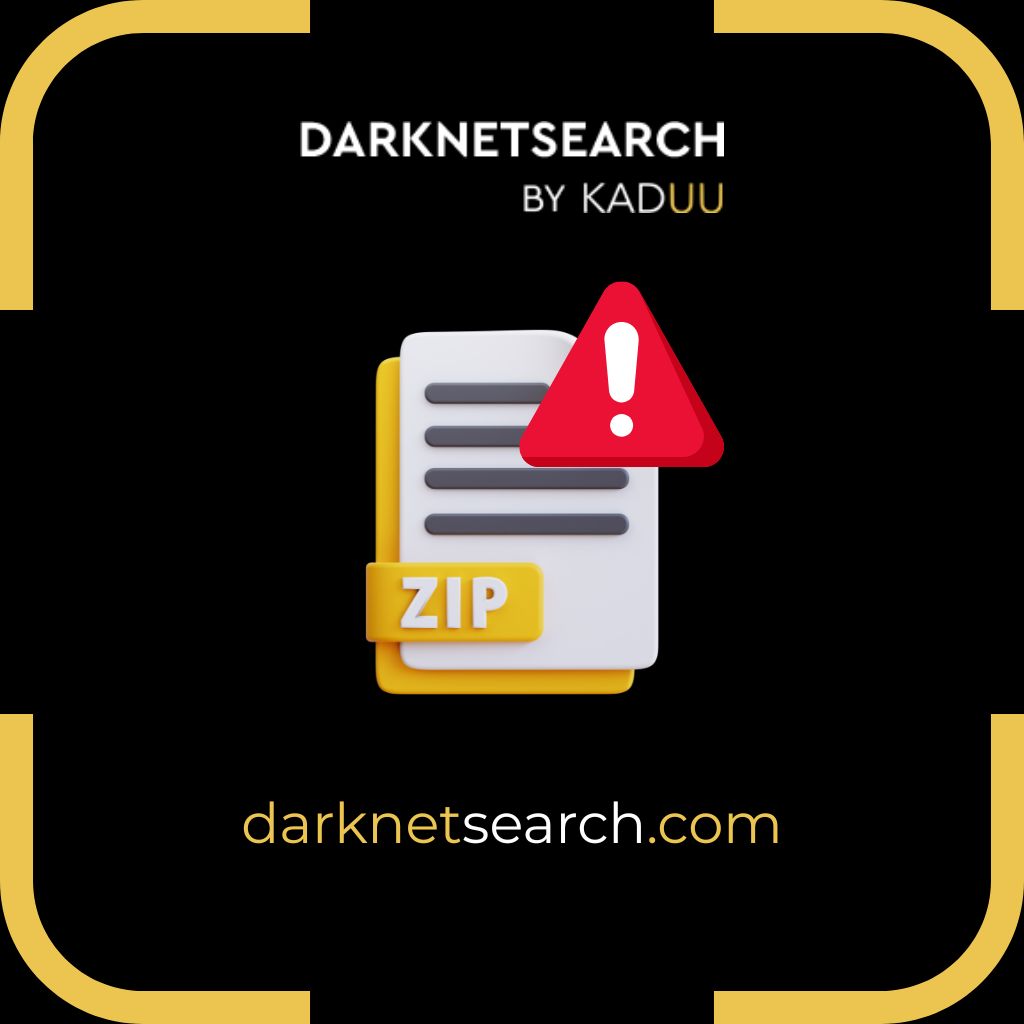➤Summary
The digital world is witnessing a new wave of malicious ZIP files 📂 targeting banks and government offices worldwide. These seemingly harmless compressed folders conceal a dangerous multilingual ZIP malware campaign designed to bypass defenses, infect networks, and steal sensitive information. Security researchers warn that these advanced cybersecurity attacks combine linguistic deception, encryption evasion, and social engineering to exploit the weakest point—human trust.
According to recent cybersecurity reports and analyses inspired by GBHackers, this attack vector has evolved dramatically, impacting financial institutions and government agencies at an alarming rate. As threat actors sharpen their tactics, organizations must reinforce cyber defense systems, educate staff, and deploy multilayered protection.
Understanding How Malicious ZIP Files Work
When users receive what looks like a legitimate email attachment 📧—perhaps an invoice, government form, or security update—they rarely suspect danger. Inside that ZIP file hides a script or executable designed to trigger a malware infection once extracted.
What makes this campaign particularly dangerous is its multilingual element. The malware adapts to the user’s system language—English, Spanish, Mandarin, Arabic, or French—allowing it to appear authentic in diverse regions. Such linguistic flexibility helps bypass traditional filters and increases the success rate of the attack.
Researchers identify that these malicious ZIP files employ layers of obfuscation and password-protection, techniques that make it harder for antivirus engines to scan their contents before extraction. In many cases, the malware is disguised as a document update, fake payment slip, or IT policy notice.
The Targets: Banks and Government Agencies Under Siege 🏦
Banks and public institutions are prime targets because they handle massive amounts of sensitive data. Once a malicious ZIP file penetrates their network, it can compromise login credentials, financial records, and classified documents.
In one recent cybersecurity attack analyzed by threat researchers, multiple banking systems in Europe experienced operational disruptions after staff unknowingly opened compromised files. In government offices, the same ZIP variants were found collecting data from internal communication channels and sending it to external servers controlled by threat actors.
These attacks highlight a growing need for advanced cyber defense mechanisms and training for employees who frequently handle email attachments from unknown sources.
Anatomy of the Multilingual ZIP Malware Campaign
The multilingual ZIP malware campaign stands out because it merges social engineering with localization. Here’s how it typically unfolds:
- Phishing Email Sent: A realistic email is sent to an employee, often using local language and formatting.
- ZIP File Attached: The file name corresponds to a regional format—like “Invoice_2025_FinDept.zip” or “Payroll_Statement_Q3.zip.”
- Password-Protected Entry: The password (included in the email) gives a false sense of legitimacy.
- Malware Execution: Once opened, scripts execute silently, downloading additional payloads.
- Data Exfiltration: Sensitive data is encrypted and transmitted to remote servers controlled by threat actors.
The campaign’s multilingual structure allows it to seamlessly infiltrate organizations across linguistic barriers—a key reason it’s spreading so fast.
Why Traditional Antivirus Tools Fail 😬
Traditional antivirus software often struggles against malicious ZIP files. Why? Because these files are encrypted and hidden under multiple layers of compression. The malware only activates once a human interacts with it, making detection extremely difficult.
Additionally, these ZIP-based payloads may use zero-day exploits or polymorphic encryption, allowing them to modify their code signatures dynamically. This evasion technique prevents most scanners from identifying them in time.
As a result, IT teams are advised to combine signature-based detection with behavioral analytics, sandboxing, and AI-driven threat monitoring to spot suspicious email attachments before they cause malware infections.
Real-World Impact: Financial and Governmental Fallout
The financial consequences of malicious ZIP files are enormous. Banks have reported losses tied to data theft, system downtime, and ransom demands. In the public sector, agencies face not only operational paralysis but also public trust erosion.
A report by Cybersecurity & Infrastructure Security Agency (CISA) states that ZIP-based phishing incidents have increased by over 65% in the last year alone. The same report underscores that multilingual variations allow the malware to “blend culturally and linguistically,” avoiding suspicion even among tech-savvy users.
Quote from security expert David Hines, CTO of SecureWatch:
“The most dangerous aspect of these attacks isn’t the code—it’s the language. Cybercriminals now speak the user’s language fluently, and that’s what makes this new generation of malicious ZIP files terrifyingly effective.”
Practical Tip: Protecting Your Network from ZIP-Based Threats 💡
Here’s a quick checklist to help strengthen your cyber defense against these threats:
✅ Educate Employees: Train all staff to recognize suspicious email attachments and unexpected ZIP files.
✅ Implement Sandboxing: Run all compressed files in isolated environments before opening.
✅ Use Multi-Layer Security: Combine antivirus, endpoint protection, and behavior analysis.
✅ Update Security Policies: Block unknown ZIP extensions by default.
✅ Regular Backups: Maintain encrypted backups to mitigate ransomware risk.
✅ Report Quickly: Encourage immediate reporting of suspicious emails.
Pro Tip: Always verify ZIP file senders through a secondary communication channel before extraction. This simple step can stop a full-scale malware infection.
The Role of Threat Actors and Social Engineering 🎭
Behind every cybersecurity attack lies a complex web of threat actors. In this case, many appear to be financially motivated groups operating from regions with limited cyber regulation. Some campaigns, however, show signs of state-sponsored coordination, especially those targeting government security and financial data.
Social engineering remains their most powerful tool. Attackers exploit curiosity and urgency—like “urgent account update” or “official compliance notice”—to lure victims into clicking. Once the ZIP file is opened, the malicious chain begins.
This manipulation of human psychology ensures that even well-defended systems can fall victim if users are not properly trained.
How to Strengthen Cyber Defense Against Future Attacks
Organizations can build resilience against malicious ZIP files by integrating comprehensive threat intelligence and advanced filtering tools. Some effective strategies include:
- Deploying AI-based intrusion detection systems capable of recognizing patterns linked to malware infections.
- Monitoring outgoing data to detect unauthorized exfiltration attempts.
- Implementing zero-trust frameworks to minimize lateral movement once an attacker enters the network.
- Collaborating with cybersecurity communities and resources like DarknetSearch to stay informed about emerging threats.
These proactive measures ensure continuous adaptation in an ever-evolving threat landscape.
The Global Response to ZIP-Based Cyber Threats 🌍
Governments and private sectors are now coordinating efforts to stop the multilingual ZIP malware campaign. Through international task forces, they aim to identify infrastructure, trace digital footprints, and disrupt criminal supply chains.
Several nations have proposed tighter regulations requiring businesses to encrypt sensitive data and verify sender authenticity in email attachments. Cybersecurity awareness programs are also being launched globally to combat the human factor that makes such cybersecurity attacks successful.
Still, experts emphasize that technical solutions alone won’t solve the problem—only continuous education and vigilance can.
Conclusion: Staying Ahead of the Next Malicious ZIP Wave
The resurgence of malicious ZIP files represents more than just another malware trend—it’s a signal that cybercriminals are evolving faster than defenses. As the multilingual ZIP malware campaign continues to target critical infrastructures, both public and private sectors must act decisively.
Cybersecurity today demands not just tools but awareness, collaboration, and constant adaptation. Whether you’re a bank manager, IT officer, or government employee, the responsibility to protect data starts with every click.
👉 Discover much more in our complete guide at DarknetSearch.com
🚀 Request a demo NOW
Your data might already be exposed. Most companies find out too late. Let ’s change that. Trusted by 100+ security teams.
🚀Ask for a demo NOW →Q: What is dark web monitoring?
A: Dark web monitoring is the process of tracking your organization’s data on hidden networks to detect leaked or stolen information such as passwords, credentials, or sensitive files shared by cybercriminals.
Q: How does dark web monitoring work?
A: Dark web monitoring works by scanning hidden sites and forums in real time to detect mentions of your data, credentials, or company information before cybercriminals can exploit them.
Q: Why use dark web monitoring?
A: Because it alerts you early when your data appears on the dark web, helping prevent breaches, fraud, and reputational damage before they escalate.
Q: Who needs dark web monitoring services?
A: MSSP and any organization that handles sensitive data, valuable assets, or customer information from small businesses to large enterprises benefits from dark web monitoring.
Q: What does it mean if your information is on the dark web?
A: It means your personal or company data has been exposed or stolen and could be used for fraud, identity theft, or unauthorized access immediate action is needed to protect yourselfsssss.

